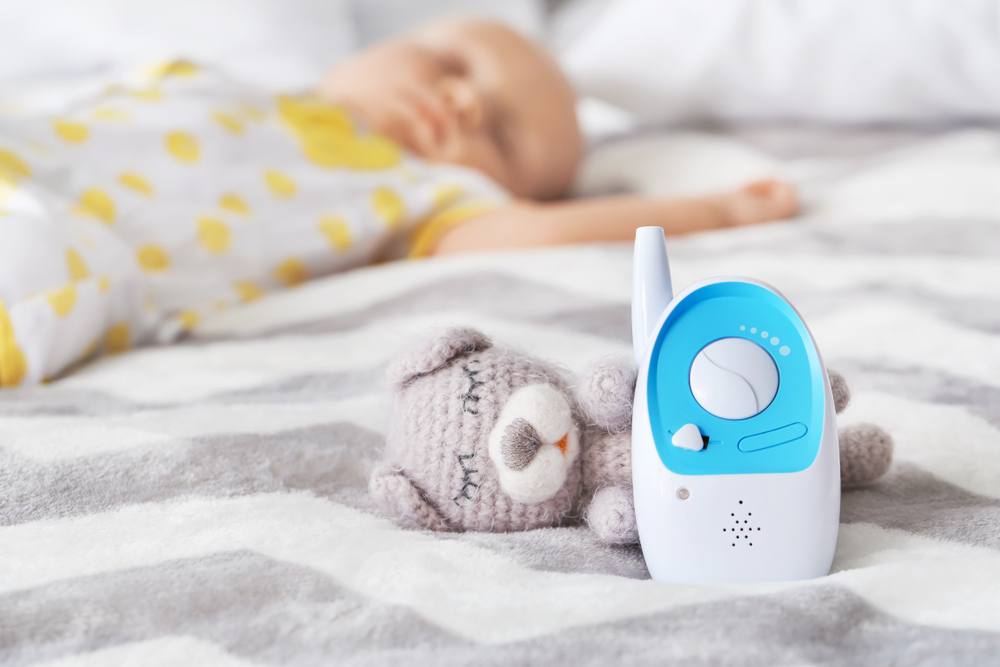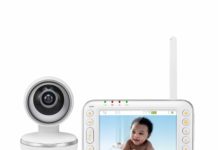
When you’re not in the same room as your child, a baby monitor has one purpose: to keep an eye on them. However, the baby monitor market is saturated these days, with gadgets that do much more than this — we’re talking about a baby security camera with a variety of functions, from night vision and two-way audio to wearable monitors.
That’s true; you can now buy high-quality baby monitors to watch your baby’s heart rate, breathing, and sleep, as well as to replace your nightlight and sound machine, take images and videos, and get the temperature and humidity alerts.
And the technology behind popular baby monitors has evolved over time, with high-definition video, noise-canceling features, and smart warnings to take away the guesswork of infant care. Read on to learn about the benefits and drawbacks of each kind of baby monitor.
Wi-Fi Baby Monitors
If you want to be able to check in on your kid from wherever Wi-Fi monitors are ideal. With Wi-Fi monitors, “range” isn’t an issue since you can access the stream from your phone from wherever there’s an internet connection. I was able to spy on my kid from the airport as I prepared to go on a business trip before he’d even woken up for the day. Wi-Fi monitors now offer additional bells and whistles, such as smartphone applications and sleep-tracking features that data nerds will like.
Aside from the risk of a security breach, another disadvantage of employing a Wi-Fi monitor is connection troubles. When it comes to internet strength, I live in an apartment building with many competing Wi-Fi signals, and I’m at the mercy of my building’s AT&T contract. I had a lot of problems setting up the Wi-Fi monitors I tried, and after they were up and running, some of them lost connection in the middle of the night, leaving me unable to see or hear my kid. However, I had no problems when I tried the identical monitors in a larger home (with a better signal).
Non-Wi-Fi Baby Monitors
I prefer a baby monitor that broadcasts through radiofrequency because of my internet access concerns. Another advantage of this kind of monitor is its simplicity of setup; many are plug-and-play, requiring no additional software or pairing. A dedicated parent unit frees up your phone for anything else you want to do with it, and your danger of being hacked is much reduced. Non-Wi-Fi devices are also more likely to include remote pan, tilt, and zoom features.
The audio and video output of the non-Wi-Fi devices was somewhat inferior quality than that of the Wi-Fi models. And, of course, with a non-Wi-Fi baby monitor, the range is an issue. All the ones I tested offer a range of up to 1,000 feet, but if your home is big or the signal must pass through numerous walls, you may still have a poor connection.
Audio-Only Baby Monitors & Wearable Smart Monitors
An audio-only monitor might provide peace of mind without breaking the bank if you’re on a limited budget. Most parents nowadays, on the other hand, will choose a video monitor, particularly if they want to move their infant to their own room before the American Academy of Pediatrics’ official 12-month guideline.
Wearable gadgets that track heart rate, blood oxygen, breathing, sleep patterns, and other metrics may provide additional peace of mind, but experts warn that they should be used with care and should not replace good sleep practices. Each of the wearables I tried came with its own visual monitor. Smart monitors are sometimes pricey and overly complex, but they may be able to help you get a few more hours of sleep.









